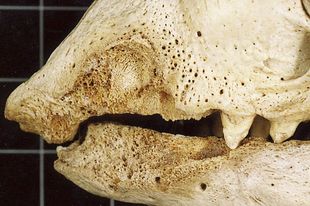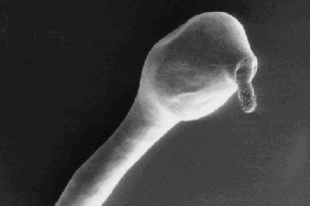Marine mammals in changing environment
Name | Marine mammals in changing environment |
Sponsor | VW Foundation, program “Research in Museums” |
Duration |
|
Cooperation partners |
Prof. Prof. h. c. Dr. Ursula Siebert, Dr. Kristina Lehnert
Prof. Dr. Thomas M. Kaiser
Dr. Dirk Brandis
Prof. Dr. Horst Kierdorf, Prof. Dr. Uwe Kierdorf
Assist. Prof. Morten Tange Olsen
Dr. Anna Ross |
Project management GOM | Dr. Timo Moritz |
Project staff GOM | Dr. Harald Benke, Dipl.-Biol. Anja Gallus |
Marine mammals comprise top predators and upper trophic levels in oceanic ecosystems of the world. They are increasingly threatened by various anthropogenic impacts in their marine habitat, e.g. pollution by chemical and pharmaceutical substances, marine litter (plastics and nanoparticles), noise, changes in prey abundance, and climate change. These constraints can have serious implications for the health status of marine mammals through heightened stress response, immune suppression, and higher energy and metabolic demands caused by disturbances that may affect different populations to a varying degree.
The natural history museums of northern Europe hold unique collections of skeletal parts, frozen and fixed tissue, and parasites of various marine mammal species of the North and Baltic Seas. These materials and associated data sets have been collected over several decades, in some cases centuries, and allow the analysis of different parameters in time and space for changes in health condition and population status of marine mammals over long time periods and in different marine Environments..
The proposed project aims to form a consortium of German museums and universities and cooperating museums in Copenhagen (Denmark) and Stockholm (Sweden), combining unique collections, marine mammal expertise, and innovative methods to investigate harbour porpoises (Phocoena phocoena), harbour seals (Phoca vitulina), grey seals (Halichoerus grypus), as well as non-native species in the North and Baltic Seas, and answer the following questions:
Have bone density and structure in marine mammals changed over time?
Can a burden of toxicants, such as mercury, lead, selenium and rare elements, be analyzed in bone and fur, and how has this burden changed over time?
Are anthropogenic influences correlated to food spectrum changes?
Can teeth be used as historical archives to reconstruct environmental conditions by analyzing stress markers in enamel and dentine?
Are marine mammals carriers of potentially zoonotic pathogens, a status which could not be recognized in the past?
Is the morphologically based classification of parasites found in marine mammals challenged by new molecular methods?


